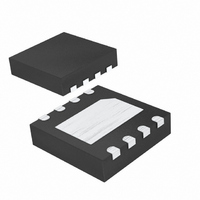MAX6397TATA+T Maxim Integrated Products, MAX6397TATA+T Datasheet - Page 10

MAX6397TATA+T
Manufacturer Part Number
MAX6397TATA+T
Description
IC SW OVERVOLT PROT 8-TDFN
Manufacturer
Maxim Integrated Products
Datasheet
1.MAX6399ATAT.pdf
(18 pages)
Specifications of MAX6397TATA+T
Voltage - Working
72V
Technology
Mixed Technology
Power (watts)
1.45W
Number Of Circuits
1
Applications
General Purpose
Package / Case
8-TDFN Exposed Pad
Lead Free Status / RoHS Status
Lead free / RoHS Compliant
Voltage - Clamping
-
As the transient begins decreasing, OUT fall time will
depend on the MOSFET’s GATE charge, the internal
charge-pump current, the output load, and the tank
capacitor at OUT.
For fast-rising transients and very large-sized MOSFETs,
add an additional external bypass capacitor from GATE
to GND to reduce the effect of the fast-rising voltages at
IN. The external capacitor acts as a voltage-divider
working against the MOSFETs’ drain-to-gate capaci-
tance. For a 6000pF C
reduce the impact of the fast-rising V
Caution must be exercised when operating the
MAX6397/MAX6398 in voltage-limiting mode for long
durations. If the V
MOSFET’s maximum gate voltage, the FET will dissipate
power continuously. To prevent damage to the external
MOSFET, proper heatsinking should be implemented.
Most automotive applications run off a multicell, 12V
lead-acid battery with a nominal voltage that swings
between 9V and 16V (depending on load current,
charging status, temperature, battery age, etc.). The
battery voltage is distributed throughout the automobile
and is locally regulated down to voltages required by
the different system modules. Load dump occurs when
the alternator is charging the battery and the battery
becomes disconnected. Power in the alternator (essen-
tially an inductor) flows into the distributed power sys-
tem and elevates the voltage seen at each module. The
voltage spikes have rise times typically greater than
5ms and decays within several hundred milliseconds
but can extend out to 1s or more depending on the
Overvoltage Protection Switch/Limiter
Controllers Operate Up to 72V
Figure 4. Overvoltage Limiter Protection Switch Configuration
10
______________________________________________________________________________________
V
BATT
Applications Information
IN
IN
is a DC voltage greater than the
gd
MAX6397
MAX6398
, a 0.1µF capacitor at GATE will
GATE
GND
OUT
SET
IN
input.
R1
R2
Load Dump
C
OUT
characteristics of the charging system (Figure 5).
These transients are capable of destroying semicon-
ductors on the first ‘fault event.’
SET provides an accurate means to set the overvoltage
level for the MAX6397/MAX6398. Use a resistor-divider to
set the desired overvoltage condition (Figure 6). SET has
a rising 1.215V threshold with a 5% falling hysteresis.
Begin by selecting the total end-to-end resistance,
R
rent equivalent to a minimum 100 x I
bias current) at the desired overvoltage threshold.
For example:
With an overvoltage threshold set to 20V:
where I
Use the following formula to calculate R2:
where V
is the overvoltage threshold.
R2 = 243kΩ, use a 240kΩ standard resistor.
R
Use a 3.79MΩ standard resistor.
A lower value for total resistance dissipates more
power but provides slightly better accuracy.
Figure 5. Load Dump Voltage Profile
TOTAL
TOTAL
V
V
PEAK
BATT
SET
= R1 + R2. Choose R
= R2 + R1, where R1 = 3.76MΩ.
TH
is SET’s 50nA input bias current.
is the 1.215V SET rising threshold and V
t
RISE
Setting Overvoltage Thresholds
R
> 5ms
R
TOTAL
2 =
100ms
R
TOTAL
< 20V/(100 x I
V
TH
×
200ms
< 4MΩ
TOTAL
R
TOTAL
V
OV
to yield a total cur-
SET
300ms
SET
)
(SET’s input
400ms
OV












